Learn how to grow onions from seed below. Read on for details, or use the shortcut buttons above to jump straight to the printable instructions.
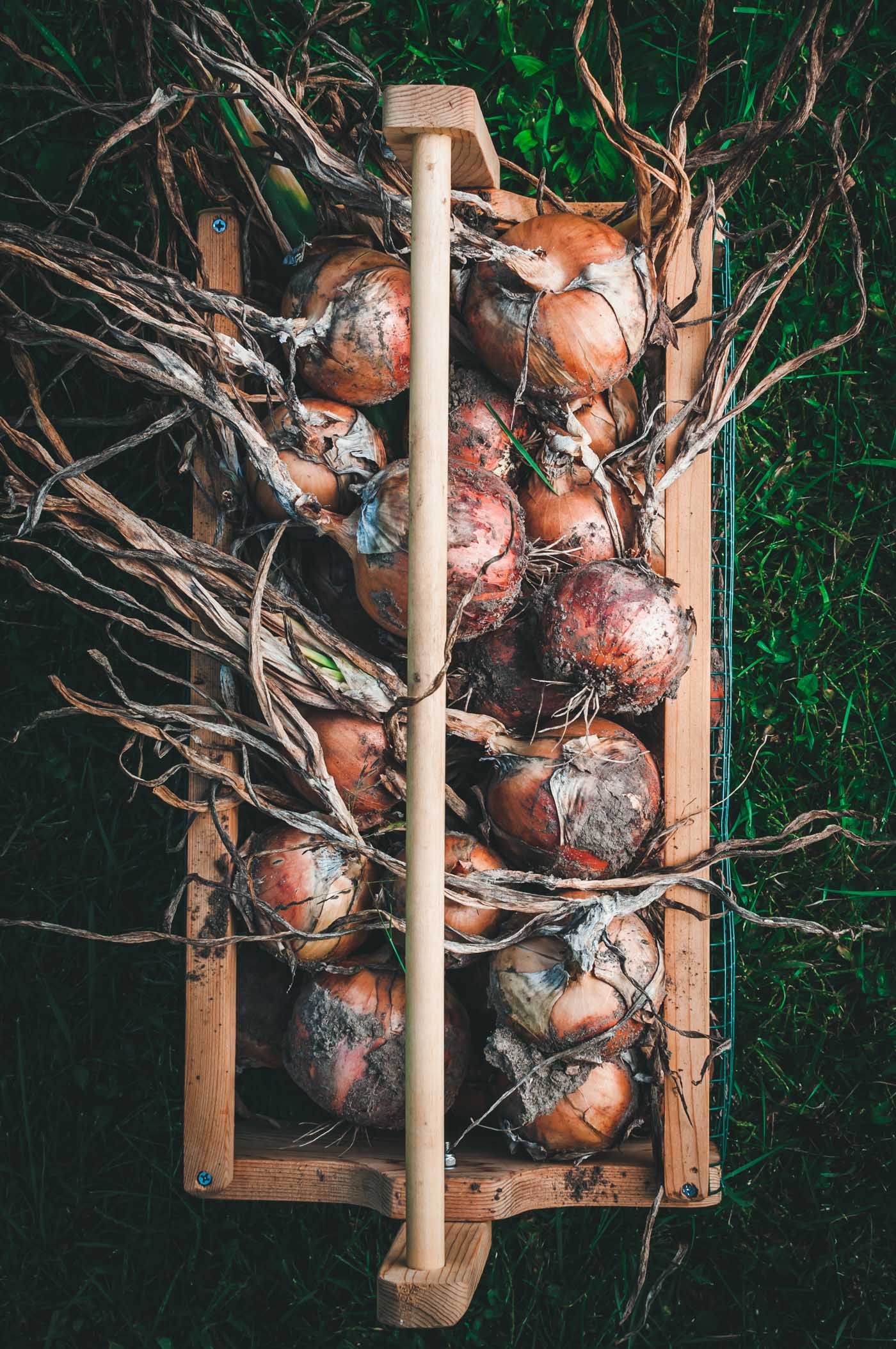
Onion (Allium cepa)
Want to know a secret? The only way I can successfully grow onions is from seed🤫! I never have any luck with sets. It’s OK though, because starting onions from seed couldn’t be easier. And bonus: there are way more varieties to choose from! There are a few tricks that you need to know, but they’re easy to implement.
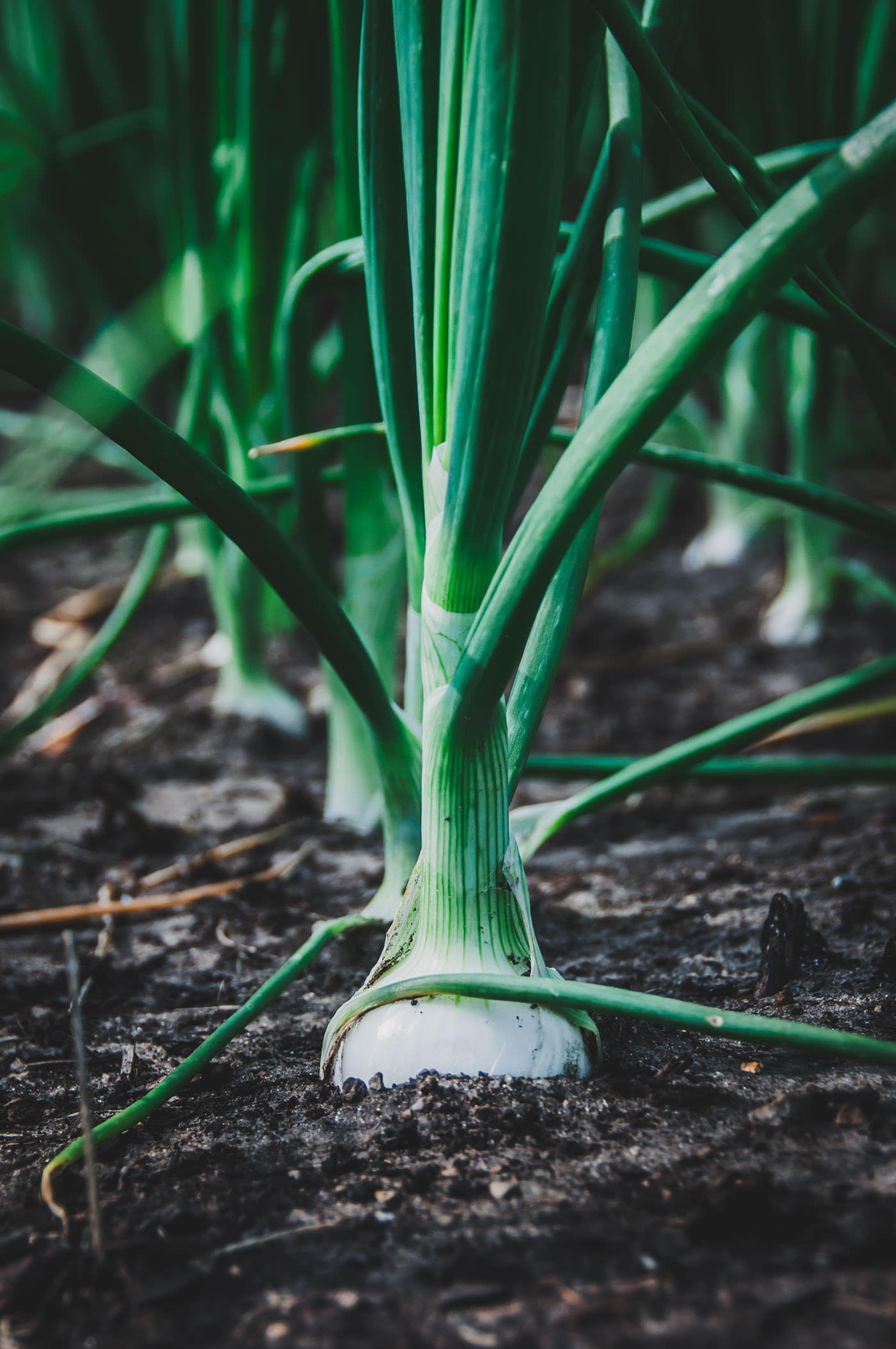
How to Grow Onions from Seed
While the steps are outlined in the printable instructions below, here are a few extra details you might find helpful:
All About That Bulb
Growing great onions is all about the bulb. There are a few tricks that you need to know in order to get onion plants to produce nice bulbs. These are choosing the correct variety for day length, getting a good start, and proper moisture. Although environmental factors like soil fertility and temperature will also impact bulb formation, getting these three down will put you on the right track.
Choose Varieties Based on Daylength
If there’s one thing you take away from this article, let it be that daylight initiates bulb formation. For this reason, onions are categorized into three main groups: long-day, intermediate-day, and short-day onions. You want to choose varieties from the group that corresponds to your location’s latitude, or north–south position.
If you’re like, say what? Don’t worry, Johnny’s has got you covered. All you need to do is find your state on their map, and it will tell you which group of onions perform best in your location. I’m in Wisconsin, so I choose varieties that fall into the long-day category.
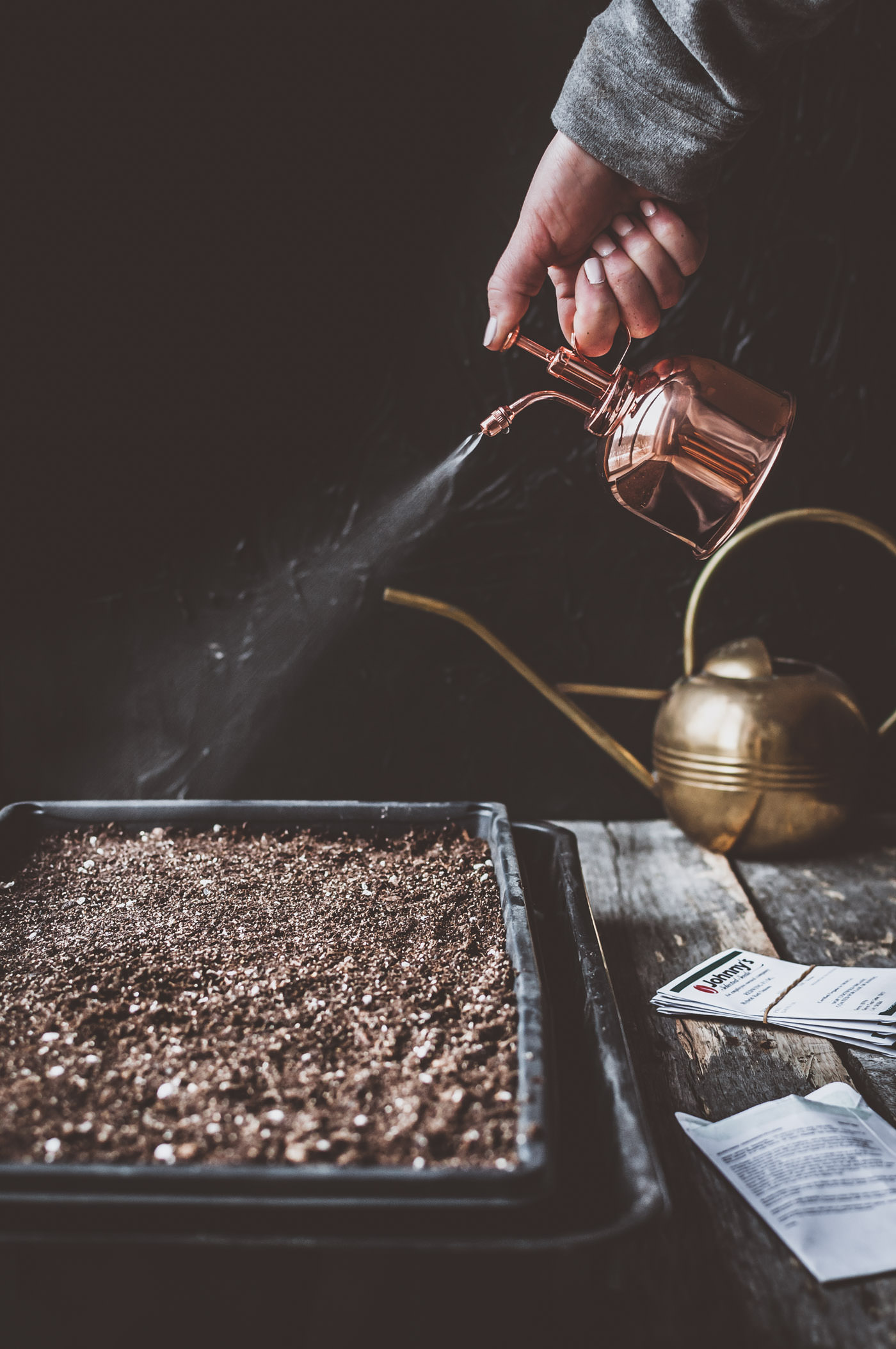
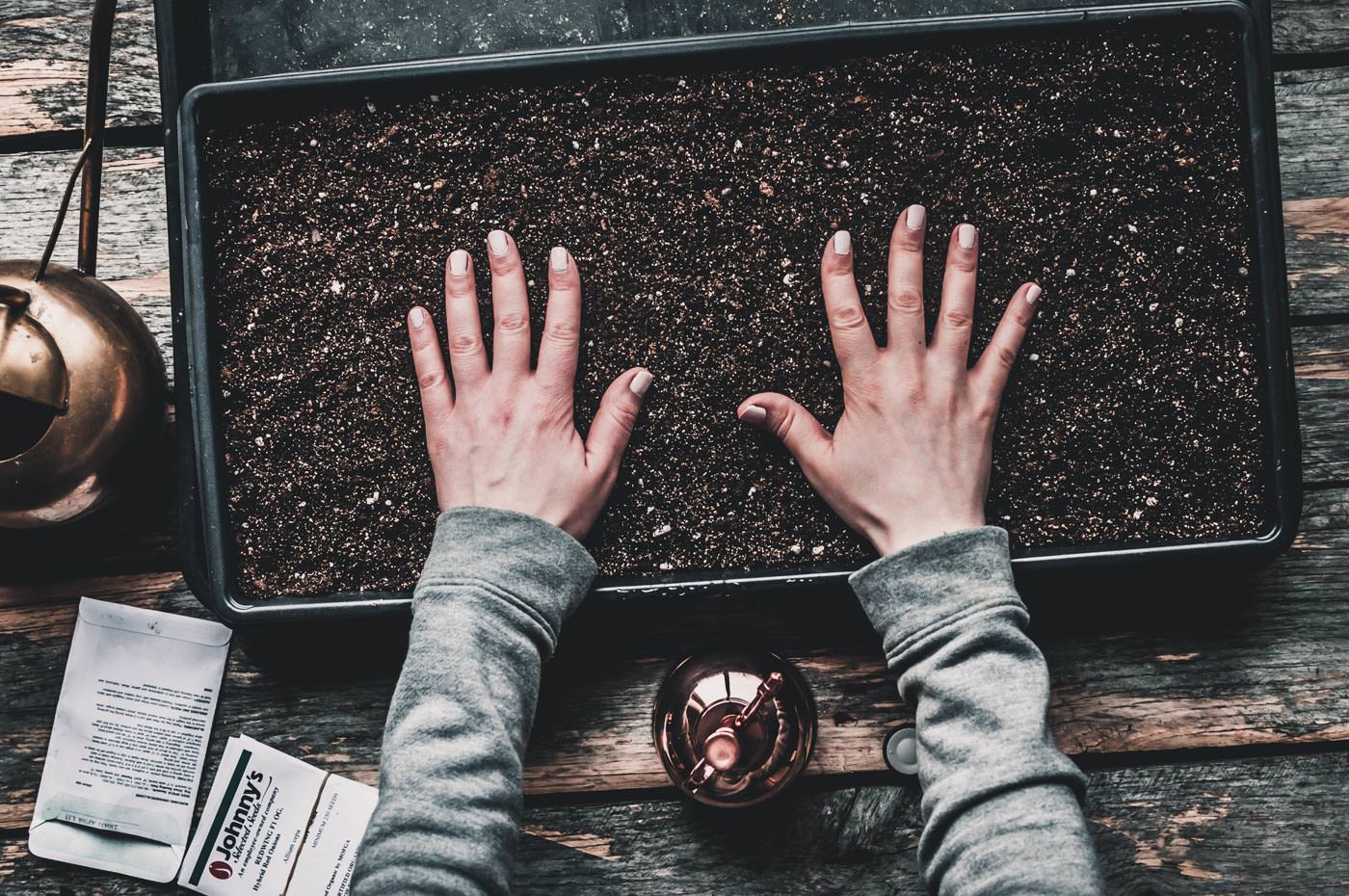
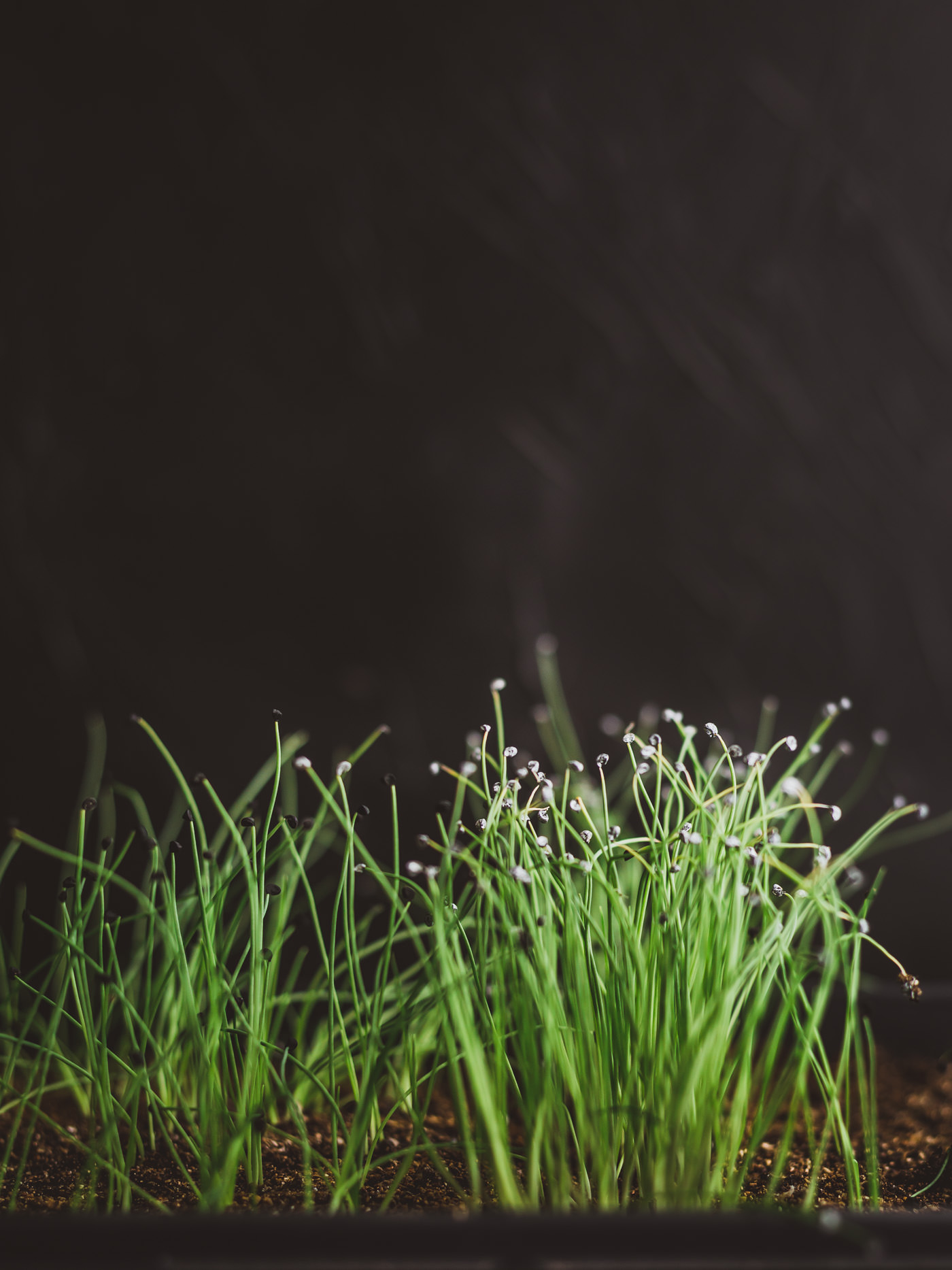
Getting a Good Start
Now that we have the right variety, the next important step is giving the onion plants a good start. Lush plants above ground lead to beautiful bulbs below, so we need to allow enough time for the plants to establish before bulb formation is triggered.
When you start your onions will depend on your growing season, location, and variety. For example, in some locations, it’s best to plant in the fall; while in other locations, it’s best to plant in the spring. Some varieties mature in as little as 50 days, while others can take 300 if sown in late-summer with the intention of overwintering.
If you’re feeling overwhelmed, don’t sweat it. Most seed companies will have the proper recommendations on their seed packets, catalogs, and websites. But in general, long-day onions are planted in late winter to early spring, intermediate-day onions are planted in the spring or fall, and short-day onions are typically planted in the fall.
While you can direct sow onion seeds if your growing season allows for it, we start them indoors. Some prefer to winter sow, but we have so many seedlings, I prefer to keep them together inside. The typical recommendation for starting onion seeds indoors is 8–10 weeks before planting outside. Onions prefer well-draining, fertile soil (pH 6.0–7.0) in full sun. Sandy loam soil is ideal.
In our Zone 4 climate, we start seeds indoors in 1020 flats in mid-February to early-March. As they grow, we trim their leaves a few times to about 4–5 inches. This stimulates growth and also makes a tasty topping for mashed potatoes.
We transplant the onion seedlings in early May into fertilized and amended beds. Our last frost isn’t until late May, but onions are pretty tough, thriving in 50-75 degrees F, but tolerating 20s. Also, our summers get really hot really quick.
If you’d like to see exactly how we fertilize our soil organically (and how you can too), grab our free guide by scrolling to the top of this blog post and sign up. It has lists and links to exact products.
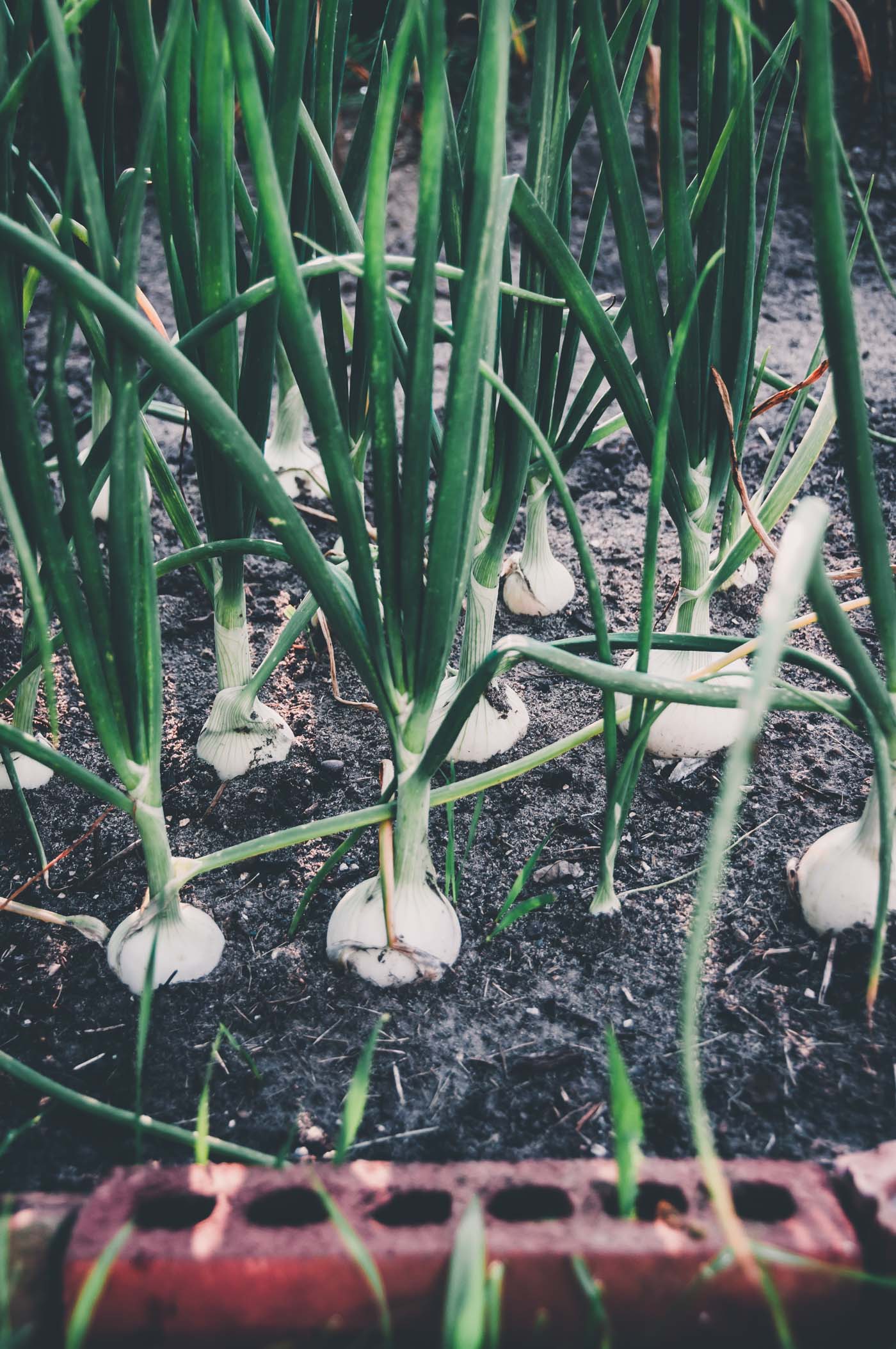
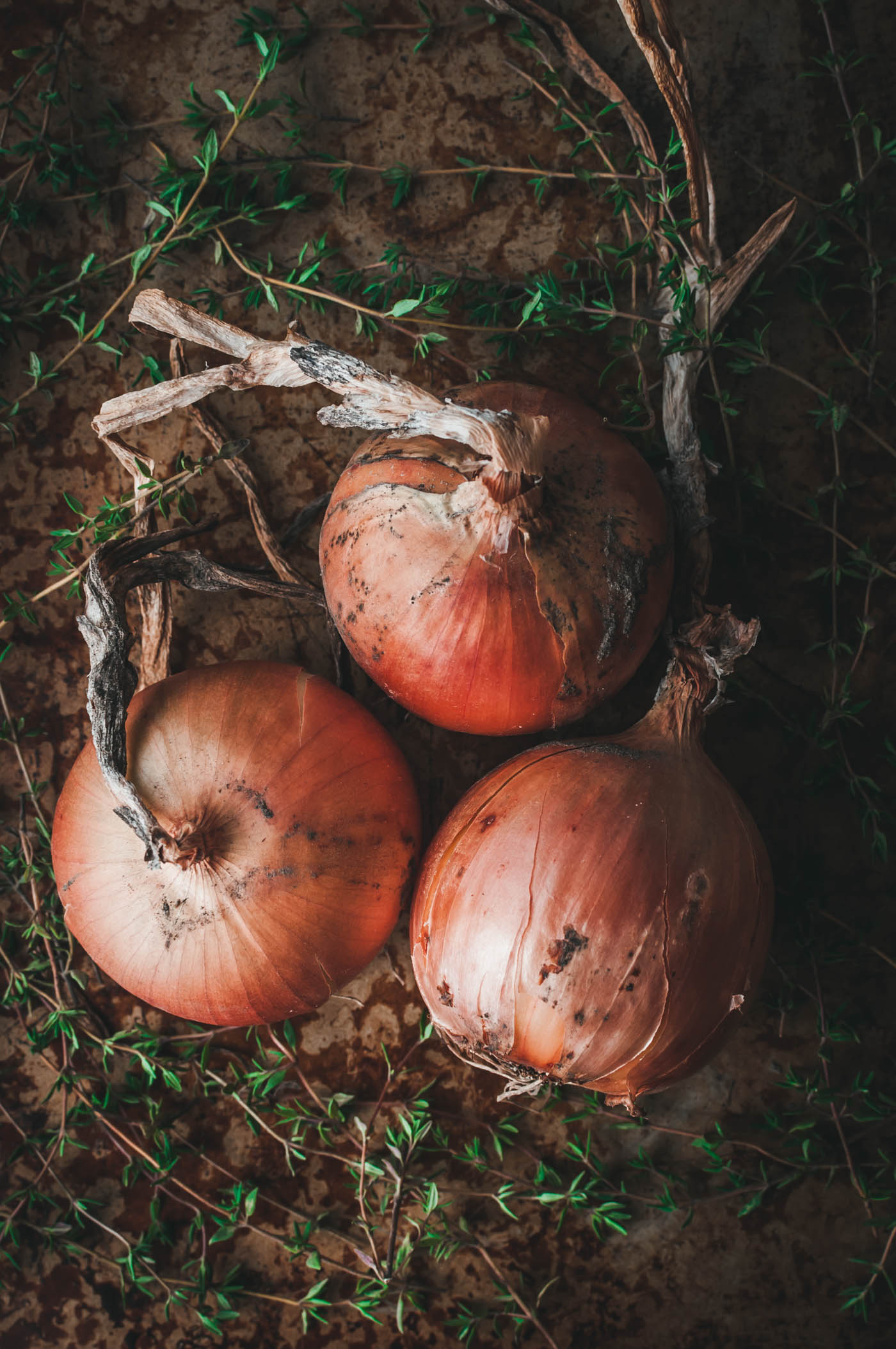
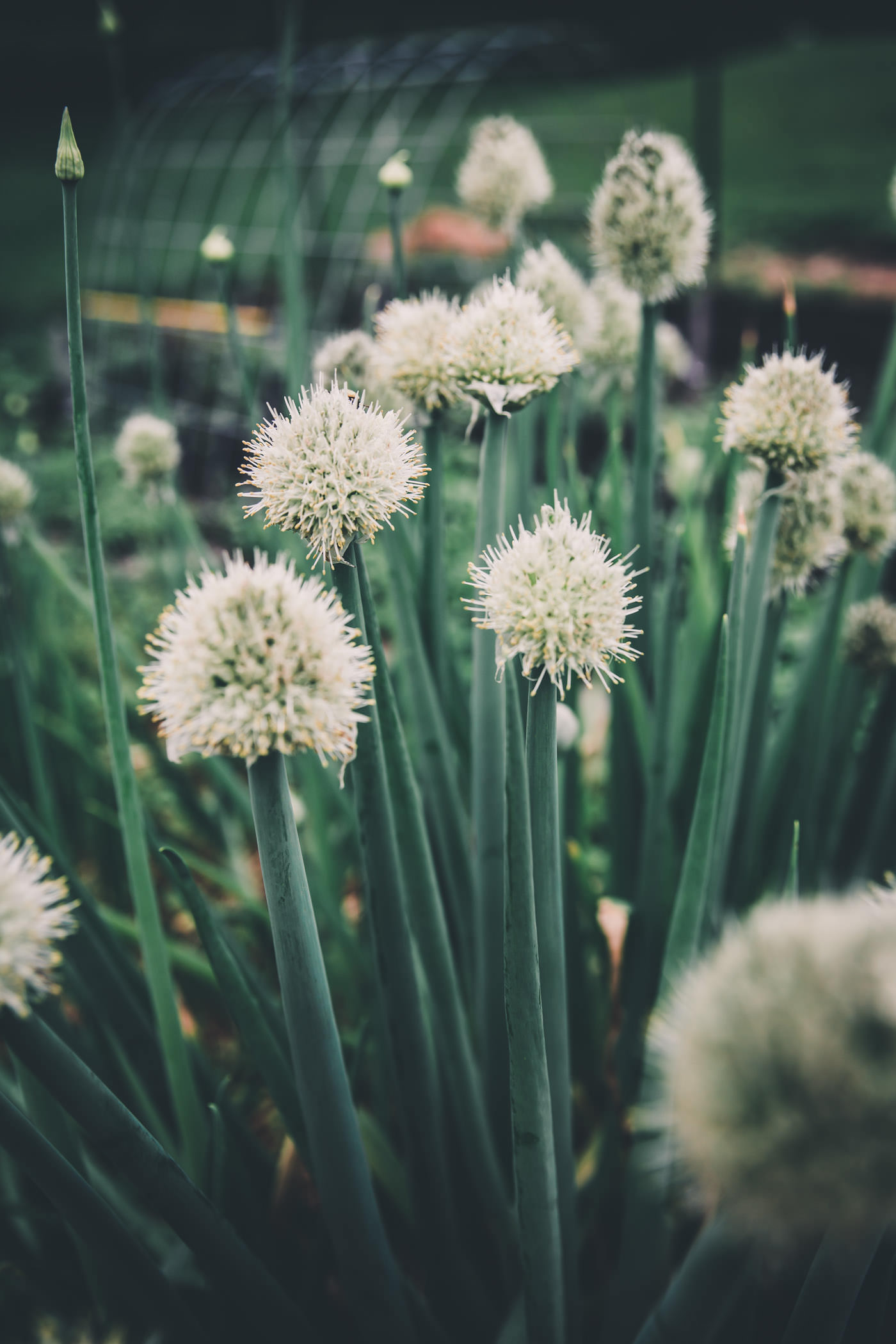
Moisture
Finally, providing adequate moisture helps bulb formation. Onions have shallow roots so they dry out quickly, which can cause bulb splitting. Be sure to water in well during transplant and provide about 1 inch per week during the growing season once established. I’ve transplanted some tiny seedlings before, but as long as they have enough moisture, they’ll establish!
Favorite Varieties
We typically get our onion seeds from Johnny’s and Baker Creek. Some favorite varieties are Ailsa Craig, Copra, Gold Coin, Redwing, Sierra Blanca, Patterson, Purplette, and Conservor (shallot). If cured properly, Copra, Patterson, Redwing, and Conservor are excellent for storage!
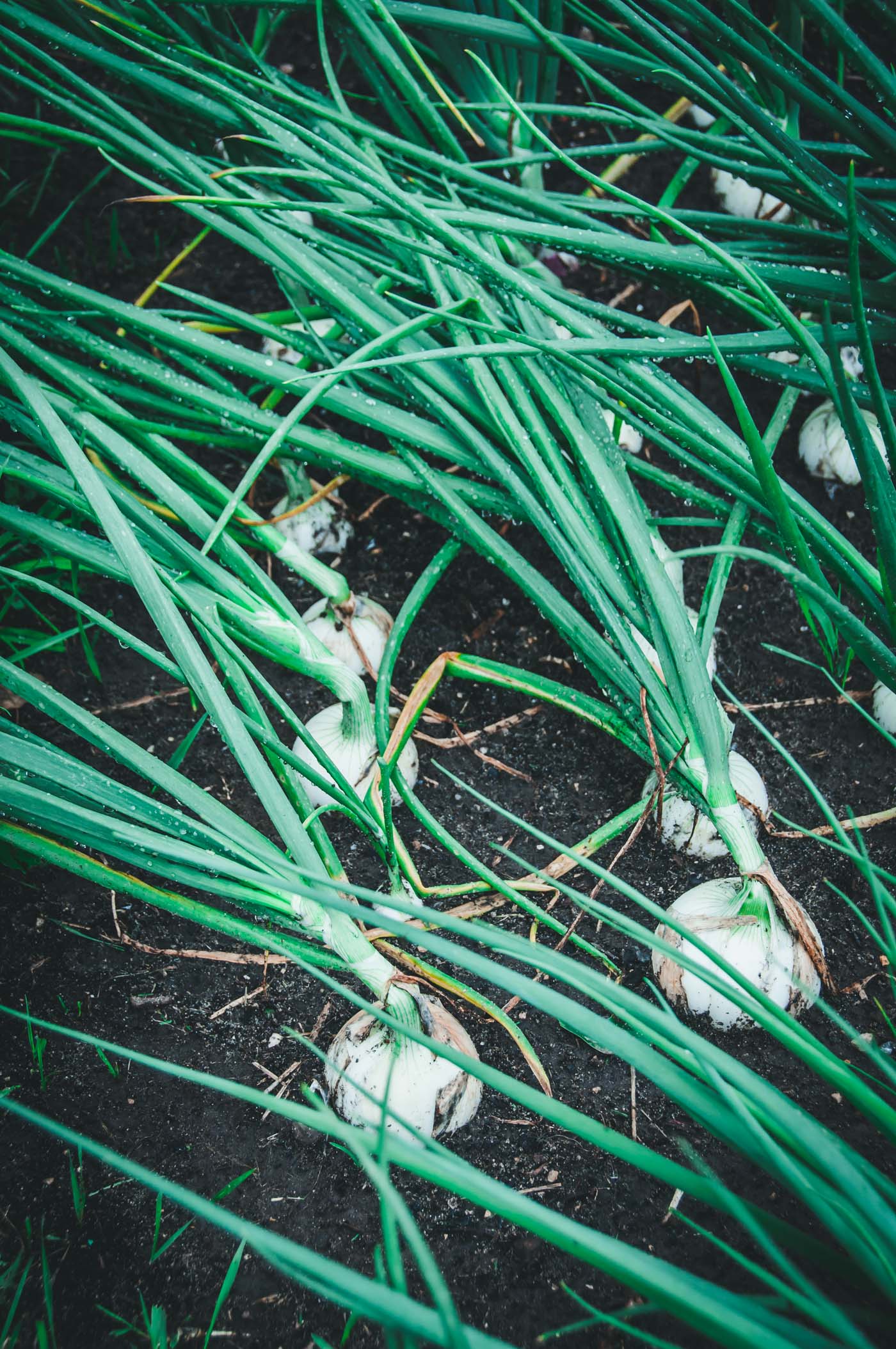
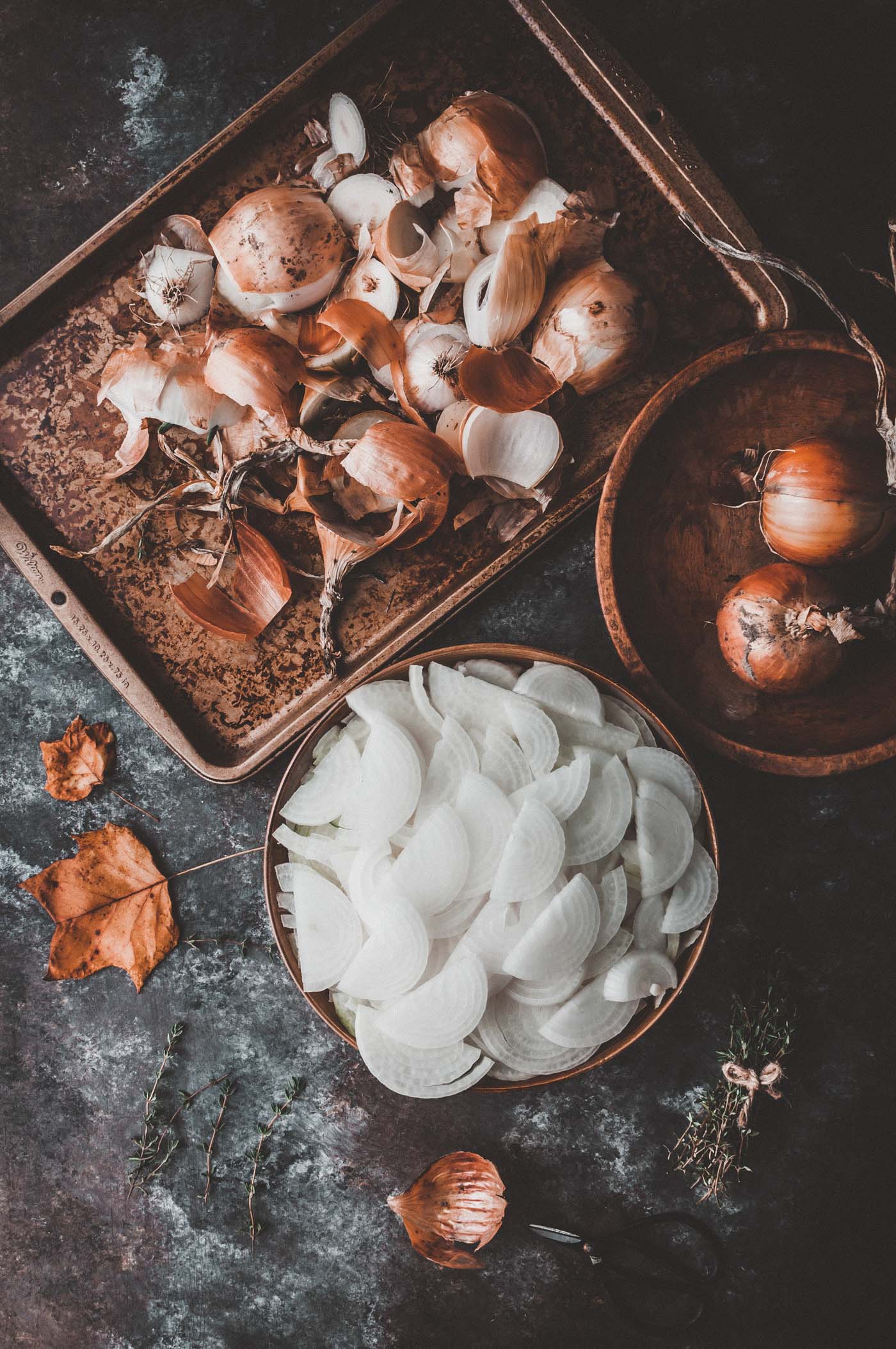
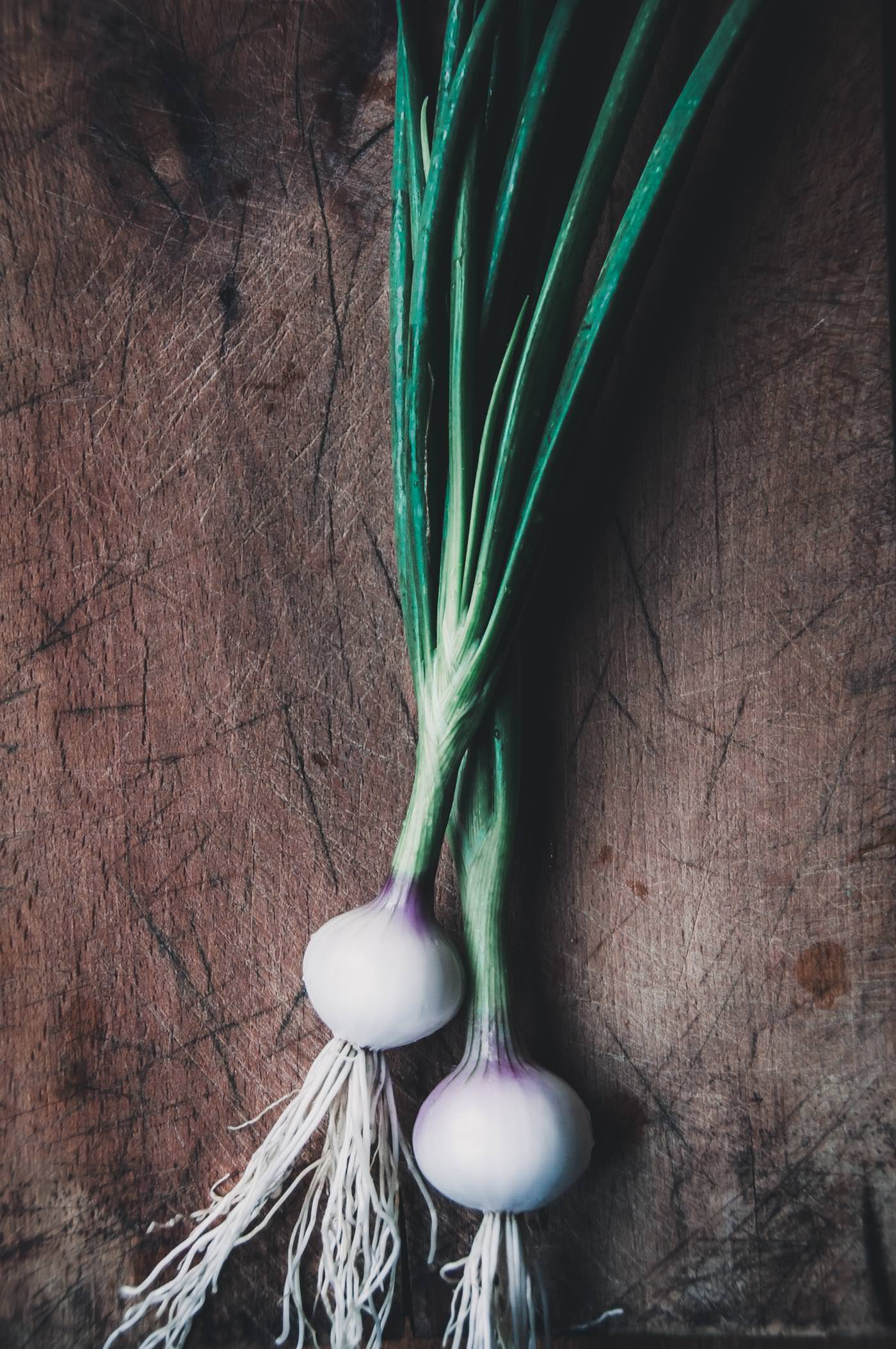
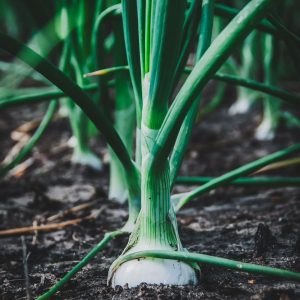
How to Grow Onions from Seed
Materials
- Seeds
- 1020 flat(s)
- Soilless mix
- Scissors
- Soil Amendments *
Instructions
- Choose a location with well-draining, fertile soil (pH 6.0–7.0) and full sun. Sandy loam soil is ideal. Prior to planting outside, prepare soil with amendments/compost based on soil needs.*
- Direct sow: Sow in a 2″ wide band, about 2 seeds/inch, 1/4–1/2″ deep, in rows 10–12″ apart. Thin to 3–4″ apart.
- Transplant: Start seeds indoors, 8–10 weeks before planting outside. In our climate (Zone 4), we start seeds between mid-February and late-March.
- Transplant: Plant 1″ deep, 3–4″ apart, in rows 10–12″ apart. Alternatively, plant in clumps of three, 1″ deep, 10″ apart, in rows 10–12″ apart. Avoid planting too deep. In our climate (Zone 4), we typically plant out in early May.
- Water in well at planting and continue to provide 1″ water per week.
Notes
Did you find this information helpful? If so, I’d love it if you shared it with your pals.

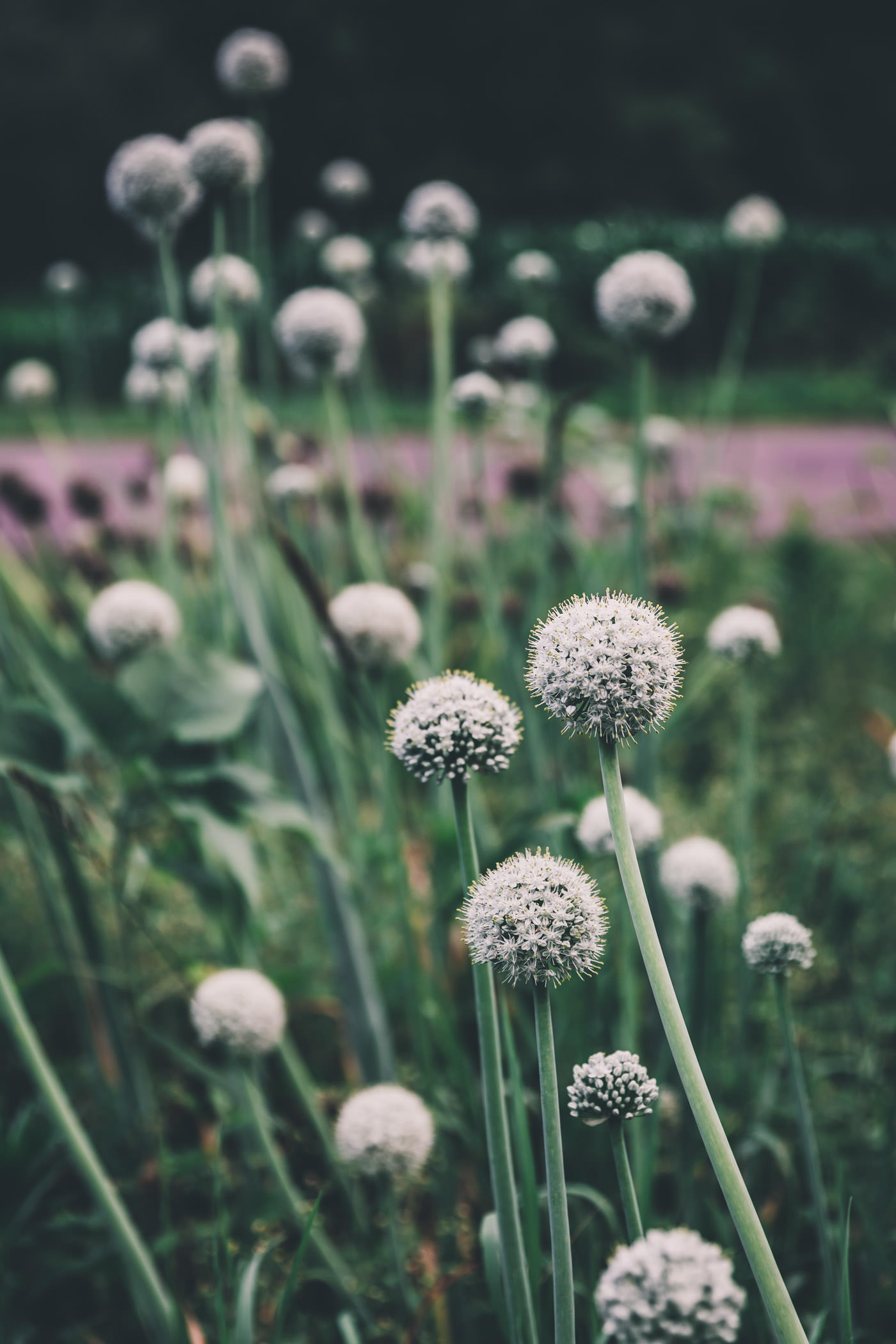
[…] our post on starting onions from seed, we received many questions about how to start seeds indoors via email and social media. I’m […]